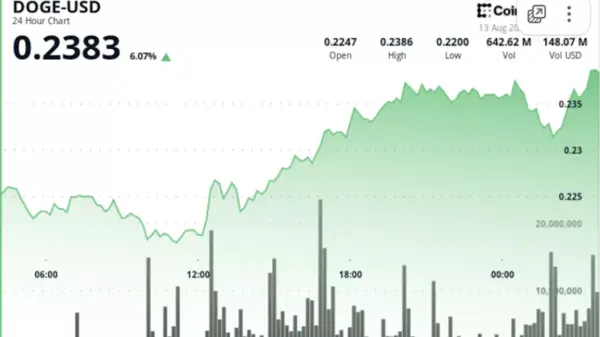Demand for liquefied natural gas (LNG) is defying earlier predictions of decline, prompting major oil companies to significantly increase their investments in this sector. Despite expectations that the global energy transition would reduce reliance on fossil fuels, the demand for oil, natural gas, and coal continues to grow, particularly for natural gas. Reports indicate that major players in the oil industry are now prioritizing their LNG businesses, much to the dismay of advocates for renewable energy.
In a recent article, CNBC’s Sam Meredith highlighted the latest quarterly results from several major oil companies, all of which have stressed the importance of their LNG operations. Shell announced plans to add 12 million tons of LNG capacity by 2030. Similarly, TotalEnergies intends to increase its LNG volumes under management by 50% within the same timeframe, pursuing both its own projects and trading with other producers. BP has initiated a new LNG project off the coasts of Senegal and Mauritania, aiming to transform these countries into a major LNG hub. Exxon and Chevron are also making ambitious strides in the LNG sector, with Exxon targeting a 50% increase in its LNG assets by 2030.
Despite forecasts suggesting that natural gas demand would peak before 2030, the International Energy Agency (IEA) recently indicated that demand for LNG is set to grow. According to the IEA, global demand growth is anticipated to pick up again in 2026, accelerating to around 2% as an increase in LNG supply is expected to ease market conditions and bolster demand in Asia. The report projected a 7% rise in LNG supply by 2026, amounting to an additional 40 bcm, the largest increase since 2019.
The continued growth of LNG demand stands in stark contrast to the increasing capacity for wind and solar energy, particularly in Europe. Despite significant investments in renewable energy sources, Europe has not seen a corresponding decrease in natural gas consumption. Data from the first quarter of 2023 revealed that the European Union’s carbon dioxide emissions rose by 3.4% year-on-year, coinciding with a 1.2% growth in the economy. This increase can be attributed to greater electricity generation from coal and gas power plants, as wind and solar sources were unable to meet demand during this period.
This trend reinforces the strategy of major oil companies to focus on LNG as a means of securing long-term profitability. With the rise of artificial intelligence and its associated demand for electricity, the need for reliable energy sources has never been more critical. The International Monetary Fund noted that electricity consumption by data centers is comparable to that of Germany or France and could match India’s consumption by 2030. This projected demand highlights the necessity for dispatchable electricity—energy that can be supplied on demand, which gas-powered stations are capable of providing.
Critics argue that the growing demand for natural gas undermines the objectives of the energy transition. While this concern is valid, recent data suggests that real-world energy dynamics consistently challenge the ambitious targets set for transitioning to renewable energy sources. As the energy landscape continues to evolve, there may be a need to reassess these goals to better align them with emerging realities in energy supply and demand.
The focus on LNG by major oil companies signifies a pivotal moment in the energy sector, as traditional fossil fuels maintain their relevance even amid a global push for greener alternatives. The evolving dynamics of energy consumption necessitate a careful examination of the future role of hydrocarbons in a world increasingly reliant on technology and data.






























































